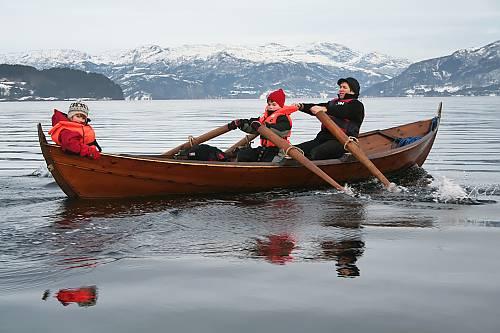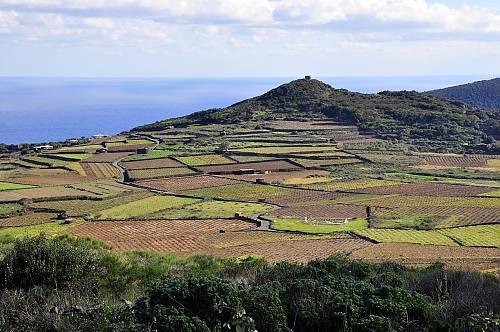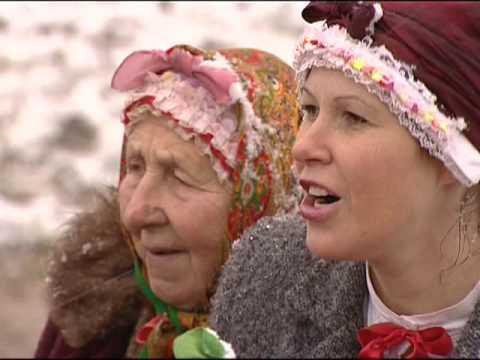When I think of parks and flowers, especially fuchsias, I don’t think of Ireland’s Mt. Stewart or England’s Kew Gardens. I let my mind wander to distant Moravia in the south-eastern part of the Czech Republic.
Far away from the madding crowd, in the agricultural village of Buchlovice (close to the train stop in the town of Stare Mesto), my Czech husband and I strolled along the ochre-coloured paths of an elegant castle once owned by members of the Austro-Hungarian nobility. We had just been married and were honeymooning.
The castle gardens are romantic beyond belief. Dense thickets green with various pines and larch trees, or blue with spruce were interspersed with long sweeps of grass streaked with wild flowers and mushrooms. Gigantic weeping oaks formed arches over our heads.
My husband told me that the name “Buchlovice” refers to more than the village—it includes its baroque castle with historic English park and gardens, elaborate semi-circular stables, and formal terraced Italianate gardens.
Rebuilt as an English park in the 19th century, the part now known as the terraced gardens was restored to its Italian form between 1875 and 1910. The deserted 12th century fortress is also part of the complex. Known as Hrad Buchlov, it sits on a hilltop overlooking Buchlovice, approximately five kilometres away.
The baroque chateau dates from the 17th century. It was built in the style of an Italian country house. The structure is made up of two independent three-winged buildings facing each other. We saw rich stucco decoration inside, ornate gilding, beautiful carpets, and Czech crystal, as well as antique baroque, rococo, and neo-classic furniture.
In the gardens there are whimsical stone sculptures, quaint fountains, and the odd chicken scratching under rare bushes. We were startled to see peacocks flying between age-old trees. Around 1900, the entire castle complex was adapted for use as a state residence for the diplomat Leopold Berchtold.
The hilltop fortress with surrounding forests, park, and castle complex were under the direction of Pavel Vlasak when we visited. Vlasak, the son of a gardener who once tended the flowers at the chateau, went to the agricultural school in Brno, the second largest city in the Czech Republic, then continued with horticulture studies in Moravia.
The entire area is a nine-village “micro-region“ only a two-hour drive from Vienna and three hours from Prague. The gardens at Buchlovice are famous not only because of the English park with its rare shrubs and trees that dendrologists from many countries come to study, but also for the more formal terraced gardens and the array of fuchsias on exhibition and for sale.
Fuchsias or lady’s eardrops are “among the most popular flowers grown” according to BBC Books “Gardeners’ World.” We found the choice at Buchlovice mind-boggling. There are hundreds of varieties, some hardy enough to plant outdoors and some more suitable to hang in baskets in sheltered areas. In most parts of Canada, Vlasak said that fuchsias may be grown in a greenhouse or conservatory. You need terra cotta pots and a soil-based compost for good drainage.
The Tour Continues
The idyllic, 18-hectare English park was started in 1701. Half wild, half tame, the garden’s paths go past a lily pond where frogs croak and bask in the sunlight, and colourful goldfish dart about.
Massive shade trees filter the sun’s beams and make ideal nesting places for the peacocks. Shrubs and bushes from around the world thrive alongside the flowers. Forsythia, weigela, and spirea vied for attention as we ambled past wondrous displays of rhododendrons, roses, and peonies.
All plants, shrubs, trees, and flowers are identified. Vlasak told us that the fuchsia display opens every year on June l and continues through Sept. 30. Closing day is Monday. The interior of the castle may also be visited but it is best to enquire ahead as visiting days and hours change.
Vlasak said that there are over 1,600 different kinds of fuchsias in the garden. We were stunned. This tremendous variety is partly due to the work of Gregor Mendel (1822–1884) who carried out his famous experiments with peas at the Augustinian Monastery in nearby Brno. Mendel crossed different strains of fuchsias to produce new varieties of a plant originally discovered in 1703 by Charles Plumier in the forests of South America. Plumier named the fuchsia in honour of Dr.Leonard Fuchs, the father of botany.
In the castle’s basement wine cellar, my husband was delighted to introduce me to Cerveny Tramin, a white wine made with blue grapes and to Veltlinski Zelene, a white wine called Gruner Veltliner in Austria.
After our visit, we headed for the four-star Mlyn Hotel in the neighbouring town of Velehrad. I can vouch for its bountiful and delicious Czech food because we had our wedding supper there. I was torn by decisions. Should I choose garlic, wild mushroom, or tripe soup? Potato or white-bread dumplings? Potato pancakes with smoked meat and sauerkraut, roast goose, wild boar, or roe deer?
However, I had no trouble deciding on the Moravian wedding cakes (small, yeast-raised pastries filled with cottage cheese or apricot jam) and palacinky (paper-thin pancakes) with bilberries for dessert.
For information about Buchlovice, visit: www.zamek-buchlovice.cz/en/
Susan Hallett is an award-winning writer and editor who has written for The Beaver, The Globe & Mail, Wine Tidings, and Doctor’s Review, among others. She is currently the European editor of Taste & Travel International. Email: [email protected]





